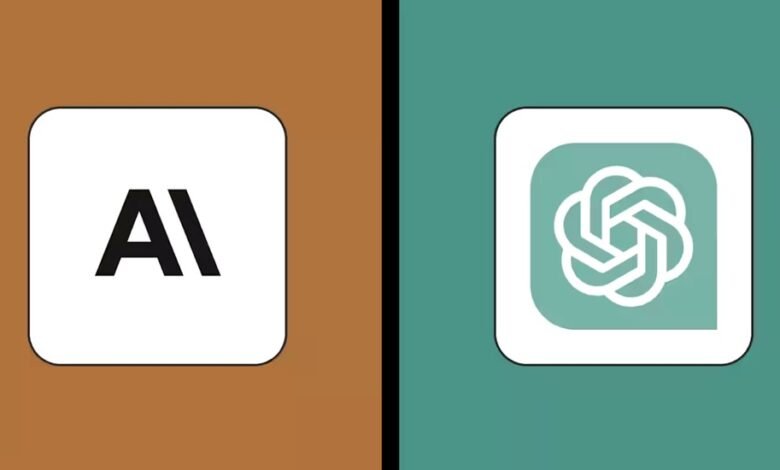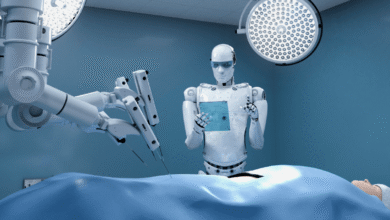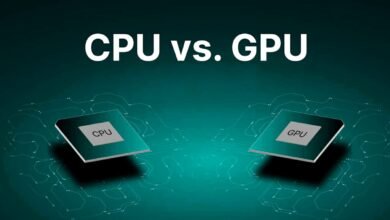
The race for AI supremacy has reached a pivotal moment as two powerful contenders emerge to reshape how we interact with artificial intelligence. OpenAI’s highly anticipated GPT-5 and Anthropic’s sophisticated Claude 4 represent the cutting edge of AI assistant technology, each offering distinct advantages that could determine your productivity, creativity, and problem-solving capabilities. Whether you’re a business professional seeking competitive advantages, a researcher pursuing breakthrough insights, or a creative mind exploring new possibilities, understanding the nuanced differences between these AI powerhouses will guide you toward the perfect digital companion for your unique requirements.
Introduction to Next-Generation AI Assistants
The battle between GPT-5 vs Claude 4 represents more than just a technological competition—it embodies the future of human-AI interaction. Both models promise to redefine how we approach complex tasks, creative endeavors, and professional workflows. While GPT-5 continues OpenAI’s legacy of large language model innovation, Claude 4 introduces Anthropic’s refined approach to AI safety and constitutional AI principles.
These advanced AI systems represent years of research and development in machine learning, natural language processing, and neural network architecture. The GPT-5 vs Claude 4 comparison reveals distinct philosophies: OpenAI’s focus on capability scaling versus Anthropic’s emphasis on helpful, harmless, and honest AI interactions.
GPT-5: OpenAI’s Next Frontier
Core Architecture and Capabilities
GPT-5, while still anticipated by the AI community, is expected to build upon the transformer architecture that made its predecessors revolutionary. Industry speculation suggests significant improvements in reasoning capabilities, multimodal processing, and contextual understanding. The model is likely to feature enhanced parameter efficiency, allowing for more sophisticated responses with reduced computational overhead.
The rumored capabilities of GPT-5 include advanced code generation, scientific reasoning, and creative writing that surpasses current benchmarks. Early reports suggest improved factual accuracy and reduced hallucinations, addressing key limitations of previous GPT models. The integration of multimodal capabilities may allow GPT-5 to process text, images, and potentially other data types seamlessly.
Expected Performance Metrics
Based on industry trends and OpenAI’s development pattern, GPT-5 is anticipated to excel in standardized AI benchmarks. The model may achieve near-human performance on complex reasoning tasks, mathematical problem-solving, and language comprehension assessments. Performance improvements in areas like logical consistency, factual recall, and contextual coherence are expected to be significant.
The GPT-5 vs Claude 4 performance comparison will likely reveal different strengths: GPT-5 may excel in raw capability metrics, while Claude 4 might demonstrate superior safety and alignment scores. These differences reflect each company’s prioritization of various AI development aspects.
Claude 4: Anthropic’s Constitutional AI Approach
Architecture and Design Philosophy
Claude 4 represents Anthropic’s commitment to developing AI systems that are not only capable but also safe and aligned with human values. The model incorporates constitutional AI principles, which means it’s trained using a set of principles that guide its behavior and decision-making processes. This approach aims to create an AI assistant that is helpful while minimizing potential harmful outputs.
The current Claude 4 family includes Claude Opus 4 and Claude Sonnet 4, with Sonnet 4 positioned as a smart, efficient model for everyday use. Claude 4’s architecture emphasizes interpretability and controllability, allowing users to better understand and direct the AI’s reasoning processes. This transparency represents a significant advantage in professional and educational applications.
Safety and Alignment Features
One of Claude 4’s most distinctive characteristics is its robust safety framework. The model is designed to refuse harmful requests, provide balanced perspectives on controversial topics, and maintain ethical guidelines in its responses. This makes Claude 4 particularly suitable for applications where safety and reliability are paramount.
The constitutional AI approach embedded in Claude 4 means the model has been trained to consider the broader implications of its responses. This results in more thoughtful, nuanced answers that consider multiple perspectives and potential consequences. In the GPT-5 vs Claude 4 safety comparison, Claude 4’s constitutional training provides a clear advantage.
Also Read: ChatGPT vs Google Gemini: Which AI Chatbot is Better?
Feature Comparison: GPT-5 vs Claude 4
Language Understanding and Generation
Both models represent significant advances in natural language processing, but they approach language understanding differently. GPT-5 is expected to leverage massive scale and diverse training data to achieve superior language fluency and creative expression. The model may excel in tasks requiring linguistic creativity, such as poetry, storytelling, and complex narrative construction.
Claude 4, conversely, focuses on producing clear, accurate, and helpful language that serves user needs effectively. The model emphasizes coherent reasoning and logical consistency in its language generation. While it may not match GPT-5’s creative flair, Claude 4 often provides more reliable and factually grounded responses.
Reasoning and Problem-Solving Capabilities
The GPT-5 vs Claude 4 reasoning comparison reveals complementary strengths. GPT-5 is anticipated to excel in abstract reasoning, pattern recognition, and complex problem decomposition. Its training methodology may enable superior performance on mathematical proofs, scientific hypothesis generation, and creative problem-solving scenarios.
Claude 4 demonstrates exceptional analytical reasoning and step-by-step problem solving. The model’s constitutional training enhances its ability to consider multiple perspectives and provide balanced analyses. This makes Claude 4 particularly effective for complex decision-making scenarios that require ethical considerations and risk assessment.
Multimodal Capabilities
While GPT-5’s multimodal features remain largely speculative, industry expectations suggest significant improvements in image understanding, code visualization, and cross-modal reasoning. The model may support seamless integration of text, visual, and potentially audio inputs, enabling more sophisticated user interactions.
Claude 4’s current implementation focuses primarily on text-based interactions, though it demonstrates strong analytical capabilities when processing structured information. The model can analyze complex documents, process code effectively, and handle various text formats with high accuracy.
Technical Performance Analysis
Speed and Efficiency Metrics
The GPT-5 vs Claude 4 performance comparison extends beyond accuracy to include speed and computational efficiency. GPT-5’s architecture is expected to optimize for both capability and efficiency, potentially offering faster response times for complex queries. However, the model’s rumored size and complexity may require significant computational resources.
Claude 4 demonstrates excellent efficiency in its current form, providing quick responses while maintaining high quality output. The Sonnet 4 variant particularly excels in everyday use cases, offering an optimal balance between capability and speed. This efficiency makes Claude 4 more accessible for users with varying computational resources.
Accuracy and Reliability
Accuracy represents a crucial differentiator in the GPT-5 vs Claude 4 comparison. GPT-5 is expected to reduce hallucinations and improve factual accuracy through advanced training techniques and larger knowledge bases. The model may achieve superior performance on factual recall and knowledge synthesis tasks.
Claude 4’s constitutional AI training emphasizes accuracy and truthfulness as core principles. The model is designed to acknowledge uncertainty rather than generate confident but incorrect responses. This approach results in higher reliability, particularly for applications requiring factual precision and trustworthy information.
Use Case Applications
Professional and Business Applications
In professional environments, the GPT-5 vs Claude 4 choice often depends on specific organizational needs. GPT-5’s anticipated creative capabilities make it ideal for marketing content generation, strategic brainstorming, and innovative problem-solving scenarios. The model’s versatility may support diverse business applications from product development to customer service automation.
Claude 4’s safety framework and analytical strengths position it well for sensitive business applications. The model excels in document analysis, risk assessment, and decision support systems where accuracy and ethical considerations are paramount. Financial institutions, healthcare organizations, and legal firms may particularly benefit from Claude 4’s reliability and transparency.
Educational and Research Settings
Educational applications reveal distinct advantages for both models. GPT-5’s expected creative capabilities may revolutionize content creation, lesson planning, and interactive learning experiences. The model could provide personalized tutoring, generate educational materials, and support diverse learning styles through adaptive interactions.
Claude 4’s analytical strengths and safety features make it exceptionally suitable for academic research and educational support. The model’s ability to provide balanced perspectives, cite limitations, and maintain ethical guidelines aligns well with educational values. Research applications benefit from Claude 4’s transparency and methodical approach to complex problems.
Creative and Content Development
The creative applications comparison in GPT-5 vs Claude 4 highlights different artistic approaches. GPT-5 is anticipated to excel in creative writing, artistic concept development, and innovative content generation. The model may support advanced creative workflows, from scriptwriting to marketing campaign development.
Claude 4 approaches creativity through analytical frameworks, providing structured creative processes and thoughtful artistic development. While perhaps less spontaneously creative than GPT-5, Claude 4 offers reliable creative support with consistent quality and appropriate content guidelines.
Pricing and Accessibility
Cost Structure Analysis
The GPT-5 vs Claude 4 pricing comparison involves multiple factors including computational requirements, feature sets, and target markets. OpenAI’s pricing strategy for GPT-5 remains speculative, but the model’s advanced capabilities may command premium pricing for high-end applications while offering competitive rates for standard usage.
Claude 4’s pricing structure reflects Anthropic’s focus on sustainable AI development and broad accessibility. The differentiated model offerings (Opus 4 and Sonnet 4) provide options for various budget levels and use cases. This tiered approach enables organizations to select appropriate capability levels while managing costs effectively.
Integration and API Access
Both platforms are expected to offer comprehensive API access, but their integration approaches differ significantly. GPT-5’s API will likely build upon OpenAI’s established ecosystem, providing familiar interfaces and extensive documentation for developers already using GPT-3.5 or GPT-4.
Claude 4’s API access emphasizes safety and control, providing developers with tools to customize AI behavior while maintaining ethical guidelines. The platform’s integration options support various development environments and include features for monitoring AI interactions and ensuring appropriate usage.
Safety and Ethical Considerations
AI Safety Frameworks
The GPT-5 vs Claude 4 safety comparison reveals fundamentally different approaches to AI alignment and safety. GPT-5’s safety measures are expected to build upon OpenAI’s existing frameworks, including fine-tuning for helpful and harmless behavior, though specific details remain unclear.
Claude 4’s constitutional AI approach represents a comprehensive safety framework embedded throughout the model’s training and operation. This methodology results in an AI assistant that consistently considers ethical implications and refuses potentially harmful requests while maintaining helpfulness and utility.
Bias Mitigation and Fairness
Both models address bias and fairness concerns, but through different methodologies. GPT-5’s approach likely involves diverse training data and bias detection systems to minimize unfair or discriminatory outputs. The model’s training may include specific debiasing techniques and fairness optimization.
Claude 4’s constitutional training inherently addresses bias through its principle-based approach. The model is trained to consider multiple perspectives, acknowledge different viewpoints, and avoid perpetuating harmful stereotypes. This results in more balanced and fair responses across diverse topics and user groups.
Future Development and Roadmap
Expected Updates and Improvements
The future development trajectory for both models suggests continued innovation and capability expansion. GPT-5’s development roadmap likely includes enhanced multimodal capabilities, improved reasoning performance, and expanded knowledge integration. OpenAI’s track record suggests regular updates and capability improvements.
Claude 4’s development continues Anthropic’s focus on safety, interpretability, and user alignment. Future updates may enhance the model’s analytical capabilities while maintaining its constitutional AI principles. The development approach prioritizes sustainable improvement over rapid capability scaling.
Market Impact and Competition
The GPT-5 vs Claude 4 competition represents broader trends in AI development, including the balance between capability and safety, commercial viability and ethical responsibility. Both models will likely influence industry standards and drive continued innovation in AI assistant technology.
Market adoption patterns may differ based on user priorities: organizations prioritizing cutting-edge capabilities might favor GPT-5, while those emphasizing safety and reliability may prefer Claude 4. This market segmentation could drive healthy competition and diverse AI development approaches.
Conclusion: Choosing Between GPT-5 and Claude 4
The GPT-5 vs Claude 4 comparison ultimately reveals two exceptional but distinct approaches to next-generation AI assistance. GPT-5’s anticipated capabilities promise revolutionary creative and analytical performance, making it ideal for users seeking cutting-edge AI capabilities and maximum versatility.
Claude 4’s constitutional AI approach offers unmatched safety, reliability, and transparency, making it the preferred choice for applications where trustworthiness and ethical considerations are paramount. The model’s analytical strengths and thoughtful responses provide consistent value across diverse professional and educational applications.
Your choice between GPT-5 vs Claude 4 should align with your specific needs, priorities, and use cases. Consider GPT-5 for maximum capability and creative potential, or choose Claude 4 for reliable, safe, and ethically-aligned AI assistance. Both models represent significant advances in artificial intelligence, and both will likely play important roles in shaping the future of human-AI collaboration.
The ongoing development of both platforms ensures that users will benefit from continued improvements and innovations. Whether you choose GPT-5 or Claude 4, you’ll be accessing next-generation AI technology that can transform how you approach complex tasks, creative projects, and professional challenges. The future of AI assistance is here, and both models offer compelling paths forward in this exciting technological landscape.







